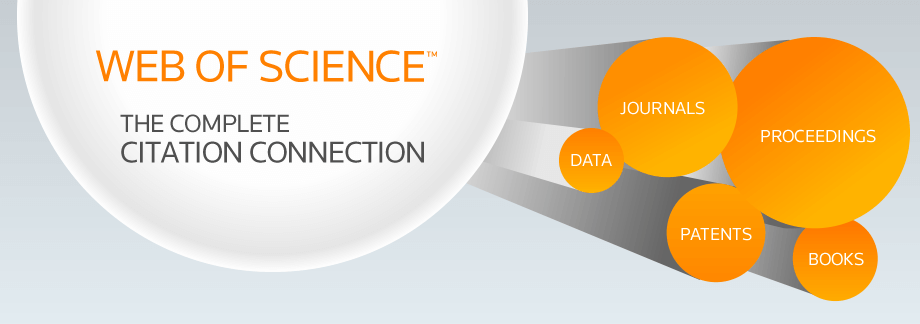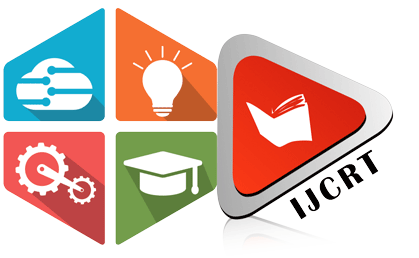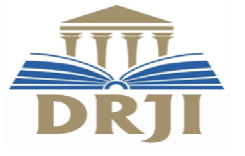INTERNATIONAL JOURNAL OF CREATIVE RESEARCH THOUGHTS - IJCRT (IJCRT.ORG)
International Peer Reviewed & Refereed Journals, Open Access Journal
IJCRT Peer-Reviewed (Refereed) Journal as Per New UGC Rules.
ISSN Approved Journal No: 2320-2882 | Impact factor: 7.97 | ESTD Year: 2013
Call For Paper - Volume 13 | Issue 10 | Month- October 2025
Scholarly open access journals, Peer-reviewed, and Refereed Journals, Impact factor 7.97 (Calculate by google scholar and Semantic Scholar | AI-Powered Research Tool) , Multidisciplinary, Monthly, Indexing in all major database & Metadata, Citation Generator, Digital Object Identifier(CrossRef DOI)
Contact Us Click Here
WhatsApp Contact Click Here
Volume 12 | Issue 5
| IJCRT Journal front page | IJCRT Journal Back Page |
Paper Title: Smart Pave: A YOLOv8 Powered Intelligent Pothole Detection and Alert System for Urban Road Safety.
Publisher Journal Name: IJCRT
Your Paper Publication Details:
Published Paper ID: - IJCRT2405122
Register Paper ID - 259296
Title: SMART PAVE: A YOLOV8 POWERED INTELLIGENT POTHOLE DETECTION AND ALERT SYSTEM FOR URBAN ROAD SAFETY.
Author Name(s): Malathi M, Vamsi V, Srinivasan V, Venu S
Publisher Journal name: IJCRT
Volume: 12
Issue: 5
Pages: b114-b119
Year: May 2024
Downloads: 166
Abstract
Potholes are areas of road surface that have cracked, worn away, and eventually formed a hole. Potholes make a ride bumpy and potentially dangerous. They can damage vehicle tires and even affect the alignment of a vehicle's wheels. With advancing urbanization, roads serve as a most important way of communication. But the increasing potholes on the roads pose a bigger danger towards public safety. Identifying and locating road potholes promptly has become a major challenge for urban construction. To address the need for improved infrastructure management, the aim of the project is to propose a pothole detection and alert system using the YOLOv8 object detection algorithm on urban road images. To enable accurate segmentation of fine-grained features, this project optimized the PothNet, which enables the segmentation head to generate high-quality masks for more accurate prediction. The proposed system serves a dual purpose, providing timely alerts to both car drivers traversing the same route and municipal authorities responsible for road maintenance. By leveraging intelligent algorithms, the system not only detects potholes but also identifies road segments in urgent need of repair. This holistic approach helps address imbalances in infrastructure maintenance efforts across cities, promoting a more equitable distribution of resources. The intelligent Pothole Detection and Alert System contribute significantly to enhancing road safety and fostering a smoother driving experience.
Licence: creative commons attribution 4.0
License
Keywords
YOLOv8,PothNet,CNN,Deep Learning.
License
Paper Title: The Internet And Its Impact On Freedom Of Speech
Publisher Journal Name: IJCRT
Your Paper Publication Details:
Published Paper ID: - IJCRT2405121
Register Paper ID - 259027
Title: THE INTERNET AND ITS IMPACT ON FREEDOM OF SPEECH
Author Name(s): Gouri Mangla, Dr. Smita Tyagi
Publisher Journal name: IJCRT
Volume: 12
Issue: 5
Pages: b103-b113
Year: May 2024
Downloads: 254
Abstract
The cornerstone of every democratic society in existence is freedom of speech. At its core, free speech is the ability to communicate openly and to receive information from others. It is regarded as the main requirement for autonomy. It is regarded as the "mother" of all other freedoms and one of the most important civil liberties that is shielded from restriction or repression by the government1. This fundamental right to freedom of speech and expression is guaranteed by Article 19(1)(a) of the Indian Constitution. Article 19 of the Universal Declaration of Human Rights (UDHR) defines freedom of expression as a human right, and the International Covenant on Civil and Political Rights (ICCPR) states that the right to free speech is recognised under international human rights law. Since the right of freedom of expression is not unqualified, certain restrictions are placed on it under Article 19(2). Nevertheless, law is the only means of restricting the right to free expression. Within the scope of this freedom is the ability to publish, market, and spread information.
Licence: creative commons attribution 4.0
License
Keywords
Constitution, Fundamental Rights, Freedom of Speech, Democracy, Digital India Act
License
Paper Title: EXAMINING THE EFFICACY OF THE DIRECT MAYORAL ELECTIONS AND ITS EFFECT ON THE PROCESS OF GOVERNANCE: A CASE STUDY OF MUMBAI
Publisher Journal Name: IJCRT
Your Paper Publication Details:
Published Paper ID: - IJCRT2405120
Register Paper ID - 259307
Title: EXAMINING THE EFFICACY OF THE DIRECT MAYORAL ELECTIONS AND ITS EFFECT ON THE PROCESS OF GOVERNANCE: A CASE STUDY OF MUMBAI
Author Name(s): Sukhada Gole
Publisher Journal name: IJCRT
Volume: 12
Issue: 5
Pages: b95-b102
Year: May 2024
Downloads: 191
Abstract
India is a diverse country. Cities are at the heart of urban governance. They act as the first point of reference for its citizens. There are many challenges to urban governance in India, especially in a city like Mumbai. Taking some initiatives toward reforming this sector is a need of the hour. Municipal leadership needs to be stronger and more efficient enough to tackle the issues of governing the city. The 74th Constitutional Amendment Act took some measures to reform the urban local self-governing institutions in India. The constitution has provided a broad framework to establish urban local bodies in each state. It has not been mentioned the details of the structure of urban governance to be followed by each state, the tenure of the mayor, qualifications, the election method to be followed to choose the mayor of a city, and the like. Therefore, these characteristics differ from state to state. The recent debate regarding municipal leadership was whether to have the direct or indirect election of a mayor. This article focuses on the analysis of the election method for a mayor in the city of Mumbai. It talks about the merits and demerits of both methods. This article tries to assess whether the direct election method has any effect on the working pattern of a mayor and whether it is constitutional to adopt it in India.
Licence: creative commons attribution 4.0
License
Keywords
Urban Local Bodies, 74th Constitutional Amendment Act, Municipal Corporation of Greater Mumbai, Election of a Mayor, Direct Election, Indirect Election, Devolution of Powers, urban reforms.
License
Paper Title: College Enquiry Chatbot-Collegiate Chatter
Publisher Journal Name: IJCRT
Your Paper Publication Details:
Published Paper ID: - IJCRT2405119
Register Paper ID - 258887
Title: COLLEGE ENQUIRY CHATBOT-COLLEGIATE CHATTER
Author Name(s): Anjali Nandana V P, Arya K P, Ditna S, Silja Varghese
Publisher Journal name: IJCRT
Volume: 12
Issue: 5
Pages: b89-b94
Year: May 2024
Downloads: 187
Abstract
The College Enquiry Chatbot is an innovative artificial intelligence (AI) application designed to streamline and enhance the communication process between prospective students, current enrollees, and the college administration. This chatbot leverages advanced Natural Language Processing (NLP) algorithms to understand and respond to user queries in real-time, providing a user-friendly interface for individuals seeking information about the college.Key features of the College Enquiry Chatbot include its ability to engage in natural language conversations, accommodating both text and speech interactions across multiple platforms such as websites and messaging apps. The chatbot excels in task automation, efficiently handling inquiries related to admission procedures, course details, faculty information, campus facilities, and more. With its 24/7 availability, the chatbot ensures that users receive instant responses, catering to diverse time zones and schedules. The system incorporates machine learning techniques to continuously improve its performance based on user feedback and evolving patterns of inquiries. Through integration with college databases and information systems, the chatbot ensures the accuracy and up-to-date nature of the information provided.The College Enquiry Chatbot represents a modern and efficient solution for addressing the informational needs of individuals interested in the college. By offering a personalized and responsive experience, the chatbot aims to optimize user satisfaction, streamline administrative processes, and contribute to a more efficient and user-centric communication framework within the educational institution.
Licence: creative commons attribution 4.0
License
Keywords
Chatbot, College Enquiry, Realtime, NLP
License
Paper Title: Modeling and 3D Printing of 2- Wheeler Frame
Publisher Journal Name: IJCRT
Your Paper Publication Details:
Published Paper ID: - IJCRT2405118
Register Paper ID - 259329
Title: MODELING AND 3D PRINTING OF 2- WHEELER FRAME
Author Name(s): Dr. Ananda Mohan Vemula, Nagula Sai Teja, Singam Sampath, M. Pavan Suth Kumar Reddy
Publisher Journal name: IJCRT
Volume: 12
Issue: 5
Pages: b82-b88
Year: May 2024
Downloads: 188
Abstract
A two-wheeler's frame is a crucial component since it supports the weight of the bike. It must therefore be robust enough to withstand stressors such as shock, twist, vibration, and others. Different kinds of failure in vehicle chassis are caused by both static and dynamic loading moments. Natural frequency, damping, and mode shapes are examples of intrinsic structural characteristics that can be discovered through 3D printing experiments. The aim of this research is to extend the lifespan of two-wheeler bike chassis by the use of 3D printing experiments. Our goal is to lessen the impact of these vibrations because, although undesirable, vibration cannot be completely eliminated
Licence: creative commons attribution 4.0
License
Keywords
To improve the life of frame
License
Paper Title: Iot Based Icu Patient Monitoring System Automatic Sms Alert Using Gsm
Publisher Journal Name: IJCRT
Your Paper Publication Details:
Published Paper ID: - IJCRT2405117
Register Paper ID - 259399
Title: IOT BASED ICU PATIENT MONITORING SYSTEM AUTOMATIC SMS ALERT USING GSM
Author Name(s): Shweta kumari, Krishna Samalla, Anjali Kokonda, Akhila Pallepogu, Gayathri Spurthi Jajula
Publisher Journal name: IJCRT
Volume: 12
Issue: 5
Pages: b75-b81
Year: May 2024
Downloads: 204
Abstract
Abstract : Integrating IoT technology has been crucial in modern healthcare for improving patient care and monitoring. This research presents a novel ICU patient monitoring system that utilizes the internet of things (IoT) to continuously monitor vital signs like temperature, humidity, pulse rate, and blood pressure in real-time. The system's data processing and collection is powered by Arduino microcontrollers, and its storage and analysis is made easy by the sophisticated cloud-based platform ThingSpeak. Medical practitioners may see and evaluate patient data in real-time using ThingSpeak's powerful analytics features. When anything out of the ordinary happens with your vitals, you may set up alerts and notifications to let the doctors know. In order to improve healthcare delivery efficiency and allow for remote monitoring, the system offers a user-friendly interface that can be accessed by online or mobile apps.
Licence: creative commons attribution 4.0
License
Keywords
IOT, Thingspeak, Arduino microcontrollers, Remote monitoring, Cloud-based platform, Healthcare delivery efficiency.
License
Paper Title: KNOWLEDGE AND ATTITUDE REGARDING NABH DOCUMENTATION GUIDELINES AMONG NURSING STUDENTS IN SELECTED NURSING COLLEGES, GUWAHATI, ASSAM: A DESCRIPTIVE STUDY
Publisher Journal Name: IJCRT
Your Paper Publication Details:
Published Paper ID: - IJCRT2405116
Register Paper ID - 259313
Title: KNOWLEDGE AND ATTITUDE REGARDING NABH DOCUMENTATION GUIDELINES AMONG NURSING STUDENTS IN SELECTED NURSING COLLEGES, GUWAHATI, ASSAM: A DESCRIPTIVE STUDY
Author Name(s): H. LALHMANGAIHZUALI, RESHMA BEGUM, SUMAN JOYTI DAS
Publisher Journal name: IJCRT
Volume: 12
Issue: 5
Pages: b65-b74
Year: May 2024
Downloads: 167
Abstract
BACKGROUND: Nurses engage in various activities from the time of a patient's admission to his or her discharge from the hospital, helping patients to meet their needs that also include the recording and reporting. Each of the activities done by the nurses and the condition of the patient should be documented properly as authentic and crucial evidence. Current health care system required that documentation ensures continuity of care, furnishes legal evidence of the process of care and supports evaluation of quality of patient care. National Accreditation Board for Hospitals and Healthcare Providers (NABH) is a constituent board of Quality Council of India (QCI), set up to establish and operate accreditation and other allied programs for healthcare organizations. The mission of NABH is to operate accreditation and allied programs in collaboration with stakeholders focusing on patient safety and quality of healthcare by adopting various national and international best practices. NABH is an Institutional Member as well as a Board member of the International Society for Quality in Health Care (ISQua) and on the board of the Asian Society for Quality in Healthcare (ASQua). Patient safety can be evaluated by mapping adverse events that occur in healthcare units. Studies done by Panesar et al. in 2015 have shown that 1-24 adverse incidents occur during every 100 consultations in the primary care context. A link between patient safety and inadequate documentation has previously been reported by studies examining documentation and adverse events in primary care. Andersson et al. in 2018, examined serious adverse events reports submitted by nurses in Swedish nursing homes to the Health and Social Care Inspectorate and found that a "lack of competence" and "incomplete or lack of documentation" were the two most common factors that contributed to adverse events.
Licence: creative commons attribution 4.0
License
Keywords
KNOWLEDGE AND ATTITUDE REGARDING NABH DOCUMENTATION GUIDELINES AMONG NURSING STUDENTS IN SELECTED NURSING COLLEGES, GUWAHATI, ASSAM: A DESCRIPTIVE STUDY
License
Paper Title: A Review On Antibacterial Herbal Face Pack
Publisher Journal Name: IJCRT
Your Paper Publication Details:
Published Paper ID: - IJCRT2405115
Register Paper ID - 259046
Title: A REVIEW ON ANTIBACTERIAL HERBAL FACE PACK
Author Name(s): Miss. Priya M.Dandekar,, Miss. Mayuri G.Zore, Mr.Amol G. Jadhao, Mr. Shivam R. Ingle, Miss. Neha G.Deshmukh
Publisher Journal name: IJCRT
Volume: 12
Issue: 5
Pages: b51-b64
Year: May 2024
Downloads: 187
Abstract
Abstract Natural remedies are more acceptable in the belief that they are safer with fewer side effects than the synthetic ones. Herbal formulations have growing demand in the world market. The objective of this work is to formulate and evaluate a cosmetic preparation polyherbal face pack made from herbal ingredients. Kaoline, tragacanth, orange peel powder, neem powder, chandan powder, aloe juice powder, turmeric powder , Fullers earth and Cicer arientinum Powder were procured from the local market in dried, powdered and then passed through sieve no 80, mixed thoroughly prepared and evaluated for its organoleptic, physico-chemical and microscopical characters . The dried powder of combined form had passable flow property which is suitable for a face pack. Herbal face packs or masks are used to stimulate blood circulation, rejuvenates and help to maintain the elasticity of the skin and remove dirt from skin pores. It is a very good attempt to establish the herbal face pack containing different powders of plants. The advantage of herbal cosmetics is their non-toxic nature, reduce the allergic reactions and time tested usefulness of many ingredients. Thus in the present work, we found good properties of the face packs and further optimization studies are required on this study to find the useful benefits of face packs on human, use as cosmetic product.
Licence: creative commons attribution 4.0
License
Keywords
Keywords:- Cosmetic, Face Pack, Herbal, Ingredients, Natural Formulation.
License
Paper Title: Spatiotemporal Fusion Networks For Human Behavior Recognition :Enhancing Channel Attention And Feature Extraction
Publisher Journal Name: IJCRT
Your Paper Publication Details:
Published Paper ID: - IJCRT2405114
Register Paper ID - 259273
Title: SPATIOTEMPORAL FUSION NETWORKS FOR HUMAN BEHAVIOR RECOGNITION :ENHANCING CHANNEL ATTENTION AND FEATURE EXTRACTION
Author Name(s): K. VENU, K. NAVEEN
Publisher Journal name: IJCRT
Volume: 12
Issue: 5
Pages: b40-b50
Year: May 2024
Downloads: 164
Abstract
This project pioneers a novel method for human behavior recognition, introducing two innovative channel attention modules: the space-time interaction and depth separable convolution modules. Utilizing convolutional neural networks (CNNs), renowned for image and video processing, a multi-scale CNN approach segments behavior videos, applies low-rank learning for behavior information extraction, and integrates findings along the time axis for holistic comprehension. This method not only simplifies information extraction but also adapts flexibly to diverse network structures, enhancing recognition accuracy while minimizing computational complexity. Further, by amalgamating CNN, GRU, and Bidirectional algorithms, the model achieves superior accuracy with just 1000 parameters, outperforming existing algorithms. This hybrid approach optimizes training features, securing even higher accuracy in behavior recognition.
Licence: creative commons attribution 4.0
License
Paper Title: SAFE AND COST-EFFICINT BLOCKCHAIN ENABLES FRAMEWORK SECURE IOT SOFTWARE UPDATES
Publisher Journal Name: IJCRT
Your Paper Publication Details:
Published Paper ID: - IJCRT2405113
Register Paper ID - 259121
Title: SAFE AND COST-EFFICINT BLOCKCHAIN ENABLES FRAMEWORK SECURE IOT SOFTWARE UPDATES
Author Name(s): M.Prathibha, Mr. K. Niranjan
Publisher Journal name: IJCRT
Volume: 12
Issue: 5
Pages: b30-b39
Year: May 2024
Downloads: 154
Abstract
This project introduces a groundbreaking solution to the security vulnerabilities encountered by resource-limited Internet of Things (IoT) devices during software updates. Traditional methods are fraught with security risks and inefficiencies due to multiple data transfers. The proposed blockchain-based framework revolutionizes this process by leveraging Ciphertext-Policy Attribute-Based Encryption (CP-ABE) for cryptographic tasks, custom authorization policies for enhanced security, and smart contracts to ensure secure delivery and payment. By storing encrypted software update blocks across multiple IPFS nodes and recording their addresses on the blockchain, the system mitigates the risk of a single point of failure. This innovative approach not only guarantees secure, efficient, and auditable software updates but also significantly bolsters IoT device security compared to conventional methods.
Licence: creative commons attribution 4.0
License
Paper Title: Automated Pneumonia Detection From Chest X-Ray Images Using Computer Vision
Publisher Journal Name: IJCRT
Your Paper Publication Details:
Published Paper ID: - IJCRT2405112
Register Paper ID - 259309
Title: AUTOMATED PNEUMONIA DETECTION FROM CHEST X-RAY IMAGES USING COMPUTER VISION
Author Name(s): Nikhil P, Pooja G, Pavithra S, Sreeji S
Publisher Journal name: IJCRT
Volume: 12
Issue: 5
Pages: b22-b29
Year: May 2024
Downloads: 148
Abstract
Pneumonia is the leading cause of death and morbidity in children, and early and accurate diagnosis is essential for timely intervention. In our project, we solve the challenge of separating chest and lung x-rays. To achieve this, we use the power of neural network (CNN) and state-of-the-art transformers. Our method involves the use of a pre-trained CNN model and Vision Transformer to extract complex features from X-ray images, allowing us to identify transformation patterns and defect. We carefully preprocessed the children's chest X-ray image database to ensure that the information was complete and balanced. We have implemented the most efficient and effective testing methods to reduce translation time and cost and improve early detection of childhood pneumonia. Our system is accurate and effective in classifying lung diseases in children; It demonstrates the potential of deep learning and visual interpretation to improve doctors' ability to quickly and accurately diagnose life-threatening diseases.
Licence: creative commons attribution 4.0
License
Keywords
Pneumonia , CNN, Vision Transformer, X-ray
License
Paper Title: Social Sentinel: Predicting national Self-Harm Trends Trough Social Networks
Publisher Journal Name: IJCRT
Your Paper Publication Details:
Published Paper ID: - IJCRT2405111
Register Paper ID - 259125
Title: SOCIAL SENTINEL: PREDICTING NATIONAL SELF-HARM TRENDS TROUGH SOCIAL NETWORKS
Author Name(s): D.Gayathri, Mr.G.Lokesh
Publisher Journal name: IJCRT
Volume: 12
Issue: 5
Pages: b11-b21
Year: May 2024
Downloads: 172
Abstract
Since this study delves into the profound impacts of self-harm on individuals and economies, emphasizing the inadequacy of traditional statistics in tracking national trends. Introducing the innovative FAST framework, it harnesses social media data to forecast self-harm incidents. By training language models to discern mental health signals from online messages, this method transforms them into insightful time series data. Using machine learning regressors, the framework demonstrated superior forecasting accuracy. In a Thai case study, it surpassed conventional methods by over 40%. Additionally, incorporating the Decision Tree algorithm enhanced accuracy, reducing Mean Absolute Error compared to other algorithms. This research pioneers a transformative approach to predict nationwide self-harm trends and potentially forecast socioeconomic factors using social media analytics.
Licence: creative commons attribution 4.0
License
Keywords
Self-Harm, Social Networks
License
Paper Title: Mapping cyber threats: Constructing an APT Knowledge graph from OSCTI
Publisher Journal Name: IJCRT
Your Paper Publication Details:
Published Paper ID: - IJCRT2405110
Register Paper ID - 259116
Title: MAPPING CYBER THREATS: CONSTRUCTING AN APT KNOWLEDGE GRAPH FROM OSCTI
Author Name(s): K. Snehalatha, Dr. R. Yamuna
Publisher Journal name: IJCRT
Volume: 12
Issue: 5
Pages: b1-b10
Year: May 2024
Downloads: 187
Abstract
as the project pioneers the use of open-source cyber threat intelligence (OSCTI) to bolster network security via a cybersecurity knowledge graph. This innovative graph streamlines access to a range of threat information, empowering informed decision-making. Leveraging attribution technology, the initiative detects and pinpoints advanced persistent threats (APTs) across diverse attack scenarios. Integrating cutting-edge knowledge graph technology with research on cyber threat attribution, the team introduces CSKG4APT, a robust cybersecurity platform. This platform harnesses ontology theory to craft an APT-centric knowledge graph model and deploys deep learning algorithms for knowledge extraction and updating. By introducing effective APT attack attribution techniques, the project amplifies network defense strategies, enabling proactive defense against rapidly evolving threats.
Licence: creative commons attribution 4.0
License
Keywords
Cybersecurity, deep learning algorithms
License
Paper Title: Generative AI in Medical Field
Publisher Journal Name: IJCRT
Your Paper Publication Details:
Published Paper ID: - IJCRT2405109
Register Paper ID - 259294
Title: GENERATIVE AI IN MEDICAL FIELD
Author Name(s): Prathyush s panicker, Akash v, Akash R, Dhrupath Rajeev
Publisher Journal name: IJCRT
Volume: 12
Issue: 5
Pages: a987-a997
Year: May 2024
Downloads: 307
Abstract
Generative AI transforms healthcare by enhancing medical imaging, accelerating drug discovery, and enabling personalized medicine. Challenges include ethics, biases, and interpretability. Future directions involve customized models and regulatory frameworks. Responsible adoption is crucial for realizing generative AI's potential. In the realm of medical imaging, generative AI reconstructs high-resolution images from low-quality scans, aiding radiologists in precise diagnoses. Additionally, it synthesizes realistic images of organs and tissues, providing valuable visual information. Personalized medicine optimization involves analyzing patient data to tailor interventions. Disease progression prediction and individualized drug dosages improve patient outcomes. While generative AI holds immense promise, addressing ethical concerns, mitigating biases, and ensuring interpretability is essential. Collaborative efforts and thoughtful regulation will drive responsible adoption and transformative impact in healthcare.
Licence: creative commons attribution 4.0
License
Keywords
generative ai, artificial intelligence, machine learning,healthcare,medical,chat gpt
License
Paper Title: REMOTE HEALTH CARE MONITORING SYSTEM USING IOT
Publisher Journal Name: IJCRT
Your Paper Publication Details:
Published Paper ID: - IJCRT2405108
Register Paper ID - 259259
Title: REMOTE HEALTH CARE MONITORING SYSTEM USING IOT
Author Name(s): TANJORE RAMESH CHANDNI, SIMHADRI TARYNSAI, VALLURI VENKATA VARUN KUMAR, VENIGALLA NAGESWARA PRASAD, SHAIK SAADAT
Publisher Journal name: IJCRT
Volume: 12
Issue: 5
Pages: a978-a986
Year: May 2024
Downloads: 187
Abstract
The Internet of Things (IoT) has revolutionized healthcare by facilitating the development of innovative solutions for remote health monitoring. This paper introduces an IoT-based health monitoring system tailored to address the challenges of monitoring vital health parameters, particularly in rural or remote areas. The system incorporates a comprehensive array of sensors, including the MAX30100 for Blood Pressure Monitoring (BPM) and Blood Oxygen Saturation (SpO2), the DS18B20 temperature sensor for precise temperature monitoring, a DHT11 sensor for humidity measurement, and a GPS module for accurate location tracking. These sensors are seamlessly integrated into a dedicated PCB board, optimizing space and efficiency. Data collected from the sensors are wirelessly transmitted to a centralized server through the Blynk IoT platform, enabling real- time analysis and visualization. An intuitive user interface empowers healthcare providers and patients to monitor health parameters and receive alerts promptly in case of deviations from normal values. Rigorous testing and validation ensure the system's reliability and accuracy across various environmental conditions. This IoT-based health monitoring system holds significant promise for enhancing. The Internet of Things (IoT) has revolutionized healthcare by facilitating the development of innovative solutions for remote health monitoring. This paper introduces an IoT-based health monitoring system tailored to address the challenges of monitoring vital health parameters, particularly in rural or remote areas. The system incorporates a comprehensive array of sensors, including the MAX30100 for Blood Pressure Monitoring (BPM) and Blood Oxygen Saturation (SpO2), the DS18B20 temperature sensor for precise temperature monitoring, a DHT11 sensor for humidity measurement, and a GPS module for accurate location tracking. These sensors are seamlessly integrated into a dedicated PCB board, optimizing space and efficiency. Data collected from the sensors are wirelessly transmitted to a centralized server through the Blynk IoT platform, enabling real- time analysis and visualization. An intuitive user interface empowers healthcare providers and patients to monitor health parameters and receive alerts promptly in case of deviations from normal values. Rigorous testing and validation ensure the system's reliability and accuracy across various environmental conditions. This IoT-based health monitoring system holds significant promise for enhancing.
Licence: creative commons attribution 4.0
License
Keywords
iot devices, internet connectivity, cloud platform, data security, mobile or web application, data analytics, alerting mechanisam, integration with electronic health records.
License
Paper Title: Accurate Prediction Of Sepsis In ICU Patients
Publisher Journal Name: IJCRT
Your Paper Publication Details:
Published Paper ID: - IJCRT2405107
Register Paper ID - 256940
Title: ACCURATE PREDICTION OF SEPSIS IN ICU PATIENTS
Author Name(s): M.A.Rane, Sneha Bamane, Shweta Maharanawar, Devyani Pathrikar
Publisher Journal name: IJCRT
Volume: 12
Issue: 5
Pages: a969-a977
Year: May 2024
Downloads: 193
Abstract
Sepsis is a potentially life-threatening condition that occurs when the body's response to an infection causes inflammation throughout the body. This inflammation can trigger a cascade of changes that can damage multiple organ systems, leading to organ failure and death if not treated promptly. Early recognition and aggressive treatment with antibiotics and supportive care are crucial for improving outcomes in septic patients. The " Accurate Prediction of Sepsis in ICU Patients" is a project that combines awareness and predictive modeling to address sepsis, a life-threatening condition commonly encountered in intensive care units (ICUs). This project is a robust awareness campaign designed to educate both the general public and healthcare professionals about sepsis. With focusing on generating awareness about sepsis, can lead to early detection and seeking medical help. By bringing the limelight on this disease, it can potentially save lives. Concurrently, advanced machine learning techniques, specifically random forest algorithms, are employed to construct a predictive model for sepsis. This model undergoes meticulous fine-tuning to ensure accurate identification of sepsis risk in ICU patients. It uses a dataset for training the predictive model. The integration of the Sequential Organ Failure Assessment (SOFA) score, including the quick SOFA (qSOFA) criteria, enhances predictive accuracy. The qSOFA criteria play a crucial role in rapid risk assessment for early intervention. Moreover, the project maintains a dedicated website that serves as an essential platform for sepsis education and the dissemination of the predictive model to the medical community.
Licence: creative commons attribution 4.0
License
Keywords
Sepsis, ICU, SOFA, qSOFA, Random Forest, Predictive Modelling, Awareness Campaign
License
Paper Title: EUCALYPTUS OIL A HERBAL DRUG: DIFFERENT METHODS OF EXTRACTION
Publisher Journal Name: IJCRT
Your Paper Publication Details:
Published Paper ID: - IJCRT2405106
Register Paper ID - 259338
Title: EUCALYPTUS OIL A HERBAL DRUG: DIFFERENT METHODS OF EXTRACTION
Author Name(s): Mr Mohd. Suhail, Dr. Ram Babu Sharma, Dr. Amardeep Kaur
Publisher Journal name: IJCRT
Volume: 12
Issue: 5
Pages: a960-a968
Year: May 2024
Downloads: 190
Abstract
Pure essential oils are concentrated oils generated from a variety of natural plants, flowers, plant roots, seeds, resins, plant exterior tissue, trees or shrubs, and fruit rinds. These oils are well-known among humans for their benefits to the body, skin, and spirit. These oils are also commercially employed due to their superior medicinal or odoriferous characteristics. To research extraction strategies available to extract oils from plants and trees, to come across pros and disadvantages of a few extraction methods, selection and efficiency of a single method. The method used to extract essential oil from plants is critical, as some processes employ solvents that can harm the healing benefits of plants and trees. There are different extraction procedures, but the oil's quality and production never remain consistent. The Soxhlet apparatus technique was used in this investigation because of its mild extraction conditions and low operating cost. Steam is a critical component in the oil extraction process. Extraction of essential oils using diverse methods and innovative techniques reduces the risk of losing the vital component of plants and trees, reduces chemical risk, shortens extraction time, is environmentally friendly, and improves the quality and production of essential oils.
Licence: creative commons attribution 4.0
License
Keywords
Eucalyptus oil, Steam Distillation using Soxhlet apparatus
License
Paper Title: A FUTURISTIC WAY TO PROTECT LIVES IN RAILWAY TRACK
Publisher Journal Name: IJCRT
Your Paper Publication Details:
Published Paper ID: - IJCRT2405105
Register Paper ID - 259312
Title: A FUTURISTIC WAY TO PROTECT LIVES IN RAILWAY TRACK
Author Name(s): Sathishwaran V, Priyadharshini P, Muthukumar R, Nehasree AP ( AP/ECE )
Publisher Journal name: IJCRT
Volume: 12
Issue: 5
Pages: a953-a959
Year: May 2024
Downloads: 170
Abstract
Railway track safety is of paramount importance to prevent accidents involving humans and animals trespassing onto the tracks, as well as natural hazards like landslides or rockfalls. To address these challenges, we propose RailGuard, an innovative system that combines computer vision and sensor technologies for enhanced safety measures. Utilizing a combination of Python, YOLOv3 algorithm, and a range of hardware components including a Raspberry Pi, Arduino Uno, LCD display, ultrasonic sensor, alarm, and DC motor, RailGuard detects and responds to potential threats in real-time. The YOLOv3 algorithm is trained to recognize specific entities such as "person", "cat", "dog", "horse", "sheep", "cow", "elephant", "bear", "zebra", and "giraffe", enabling precise identification of trespassers and animals on the tracks. Upon detection, RailGuard activates the alarm and halts the movement of trains by stopping the DC motor, thereby averting potential collisions and ensuring passenger and animal safety
Licence: creative commons attribution 4.0
License
Keywords
Predictive Railway Safety, AI-powered Track Monitoring, Multi-sensor Obstacle Detection, Automated Train Response Systems, Self-regulating Railway Network.
License
Paper Title: Bridging the Gap: A Survey on Edge and Fog Computing for the Future of Smart Agriculture
Publisher Journal Name: IJCRT
Your Paper Publication Details:
Published Paper ID: - IJCRT2405104
Register Paper ID - 258772
Title: BRIDGING THE GAP: A SURVEY ON EDGE AND FOG COMPUTING FOR THE FUTURE OF SMART AGRICULTURE
Author Name(s): Palagati Anusha, G. Gayathri, Jangala Sindhu, Kondamalla Sruchen Kumar, Meesala Kiran
Publisher Journal name: IJCRT
Volume: 12
Issue: 5
Pages: a945-a952
Year: May 2024
Downloads: 157
Abstract
Abstract In recent years, the agricultural sector has witnessed a paradigm shift towards digitalization, driven by the integration of cutting-edge technologies such as edge and fog computing .Smart agriculture is often perceived as one key enabler when considering the twin objectives of eliminating world hunger and undernourishment. This survey delves into the transformative potential of edge and fog computing in revolutionizing smart agriculture practices. By pushing computational tasks closer to the data source, edge computing enhances real-time data processing, enabling timely decision-making and resource optimization on farms. Edge computing offers a potentially tractable model for mainstreaming smart agriculture. Additionally, fog computing extends this capability by leveraging intermediate nodes to further distribute computational tasks and manage data flows efficiently. Through a comprehensive analysis of existing literature, this survey explores the key challenges, opportunities, and emerging trends in the adoption of edge and fog computing in smart agriculture. Moreover, it investigates the integration of these technologies with other emerging technologies such as Internet of Things (IoT), artificial intelligence (AI), and block chain to create robust and sustainable agricultural ecosystems. By shedding light on the current state and future prospects of edge and fog computing in agriculture, this survey aims to provide valuable insights for researchers, practitioners, and policymakers to harness the full potential of these technologies for sustainable and efficient agricultural production.
Licence: creative commons attribution 4.0
License
Keywords
Smart agriculture, Edge computing, Fog computing, Internet of Things (IoT), Digitalization.
License
Paper Title: Transformative Advances in Agriculture Sciences: Addressing Challenges and Enhancing Sustainability
Publisher Journal Name: IJCRT
Your Paper Publication Details:
Published Paper ID: - IJCRT2405103
Register Paper ID - 259306
Title: TRANSFORMATIVE ADVANCES IN AGRICULTURE SCIENCES: ADDRESSING CHALLENGES AND ENHANCING SUSTAINABILITY
Author Name(s): Suvarna Ramesh Bansule, Dr. Arun K. Zingare
Publisher Journal name: IJCRT
Volume: 12
Issue: 5
Pages: a938-a944
Year: May 2024
Downloads: 183
Abstract
Recent years have witnessed remarkable progress in agriculture sciences, driven by technological innovations and evolving research paradigms. This abstract provides an overview of key advancements shaping the agricultural landscape. Precision agriculture has emerged as a cornerstone, leveraging technologies like GPS, sensors, and AI to optimize resource use and enhance productivity while reducing environmental impact. Genetic engineering and genomics have revolutionized crop breeding, enabling the development of resilient varieties with improved traits. Vertical farming and controlled environment agriculture have redefined traditional farming practices, offering sustainable solutions for urban food production. Moreover, bioinformatics and big data analytics have empowered researchers to harness vast datasets for informed decision-making and predictive modeling. Agroecological approaches promote biodiversity and soil health, while remote sensing technologies enable real-time monitoring of crops and environmental conditions. Additionally, alternative protein sources and water management technologies address pressing challenges related to food security and resource sustainability. Collectively, these advancements underscore the transformative potential of agriculture sciences in addressing global challenges and fostering a more sustainable future.
Licence: creative commons attribution 4.0
License
Keywords
Agricultural Science, Enhancing Sustainability, Environmental Science
License
About IJCRT
The International Journal of Creative Research Thoughts (IJCRT) aims to explore advances in research pertaining to applied, theoretical and experimental Technological studies. The goal is to promote scientific information interchange between researchers, developers, engineers, students, and practitioners working in and around the world.
Indexing In Google Scholar, ResearcherID Thomson Reuters, Mendeley : reference manager, Academia.edu, arXiv.org, Research Gate, CiteSeerX, DocStoc, ISSUU, Scribd, and many more International Journal of Creative Research Thoughts (IJCRT) ISSN: 2320-2882 | Impact Factor: 7.97 | 7.97 impact factor and ISSN Approved. Provide DOI and Hard copy of Certificate. Low Open Access Processing Charges. 1500 INR for Indian author & 55$ for foreign International author. Call For Paper (Volume 13 | Issue 10 | Month- October 2025)
October 2025
Volume 13 | Issue 10
Last Date :
30-Nov-2025
Submit Manuscript Online Impact Factor: 7.97 Review Results : Within 02-03 Days Paper Publication : Within 02-03 Days

ISSN: 2320-2882 Impact Factor: 7.97 and ISSN APPROVED Journal Starting Year (ESTD) : 2013

ISSN: 2320-2882 Impact Factor: 7.97 and ISSN APPROVED Journal Starting Year (ESTD) : 2013

CONFERENCE PROPOSAL CONFERENCE PROCEEDINGS







































































